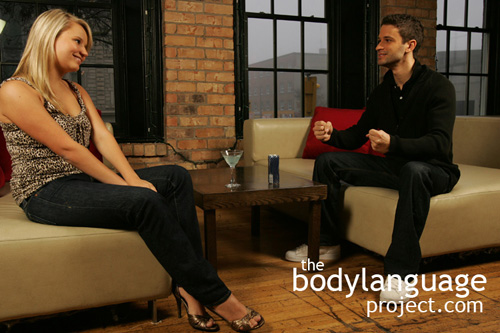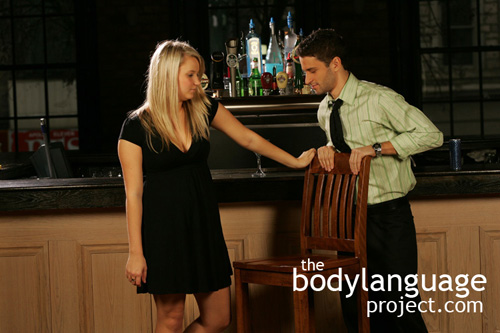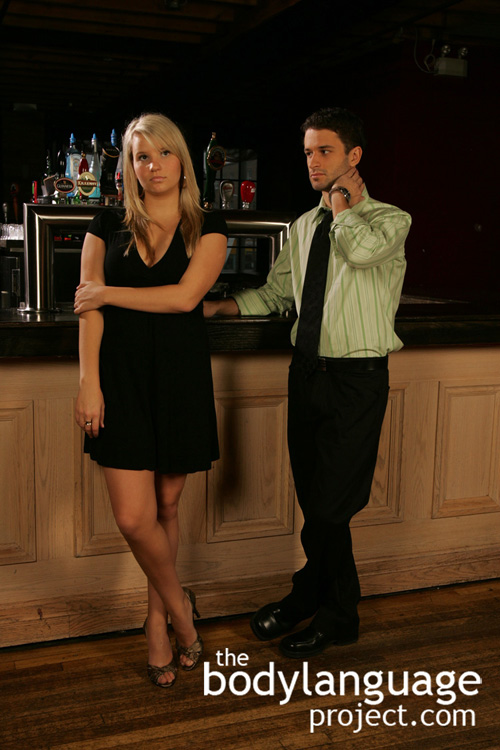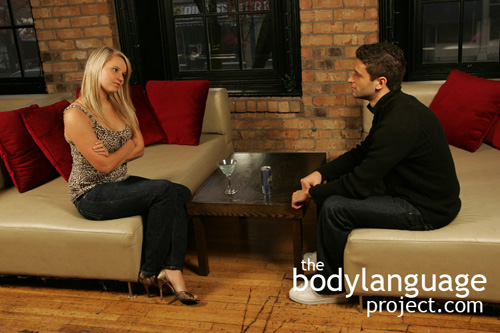
When people tell the truth they will usually show extra enthusiasm and commit to their story. Liars often start off the same way, but quickly trail off.
Liars will motion without emphasis, or describe events by trailing off or use weak statements. They might limit arm and hand movement by clasping them together or locking them down on an armrest with such force they turn their knuckles white. The hands might be put out of sight in pockets or under a table where they can’t be read. Reduced movement can be seen throughout the body, not just in the hands. The entire body including the head, arms, feet, and torso can seem to lock in place. People that are telling the truth spend a lot of time and energy in efforts to make the facts known which comes across in their body language and gesturing. Truth tellers are happy to spend as much time as necessary to get everything right. They will often add more detail than required and go over it again and again if necessary. Not emphasizing is linked to the freeze response where the mind clams the body shut and reduces movement so as to draw less attention to it. What is important in lie detection is to compare cues from a baseline. That is, if someone suddenly drops emphasis then you know they’ve lost interest in the topic or are lying. In either case, it will have provided useful information to the body language reader.
In writing this passage, I had just reviewed a video (see bottom posted on the web of a baseball game in which a player leaped head-over-feet clear over the catcher as he came to homeplate to score a run. The catcher, stuck in a fear response, failed to tag the runner. Baseball has an interesting tradition where it is customary for the runner to body-check the catcher at homeplate as he tries to tag for an out. While the catcher braced and ducked with his elbow up to make the tag, the runner jumped over the catcher landing on home plate. The catcher stuck with his elbow up in defense could only convince his mind to bring his arm just close enough to miss the tag! Because his mind feared the body check, he wasn’t able to follow through with what he intended. While this is an interesting fear based response what follows is even more interesting since it helps us read liars. The catcher, realizing he failed to get the out, quickly turns to pursue the runner. One must ask why he would track the runner down if he made the tag? Obviously he hadn’t! But more important that this, is that we know that he knows that he didn’t make the tag! This means that any nonverbal language following the lack of tag, should he dispute it, is read as lying language. To state his case, the catcher chats with the umpire by raising his arms showing how he made the tag. What is revealing, however, is that the catcher only slightly raises his arms instead of doing it with emphasis. Instead of showing the gesture over and over again, the catcher just raises his arms once as if to make a casual rainbow motion with his arms. When his coach shows up with arms flaying and talking with enthusiasm, the catcher quietly exits! The catcher knows that he can’t make a case and so doesn’t put any effort into trying. The difference between the coach and the catcher, is that the catcher knows he’s lying, while the coach isn’t sure. Once more, the coach isn’t actually lying anyway, since he wasn’t there to feel the contact or lack thereof of the catchers mitt and the runner, he’s just acting out an inherent bias – he’s playing the role he was hired to do. Lack of commitment is an important cue to watch for when detecting lies so be careful to watch for it.





